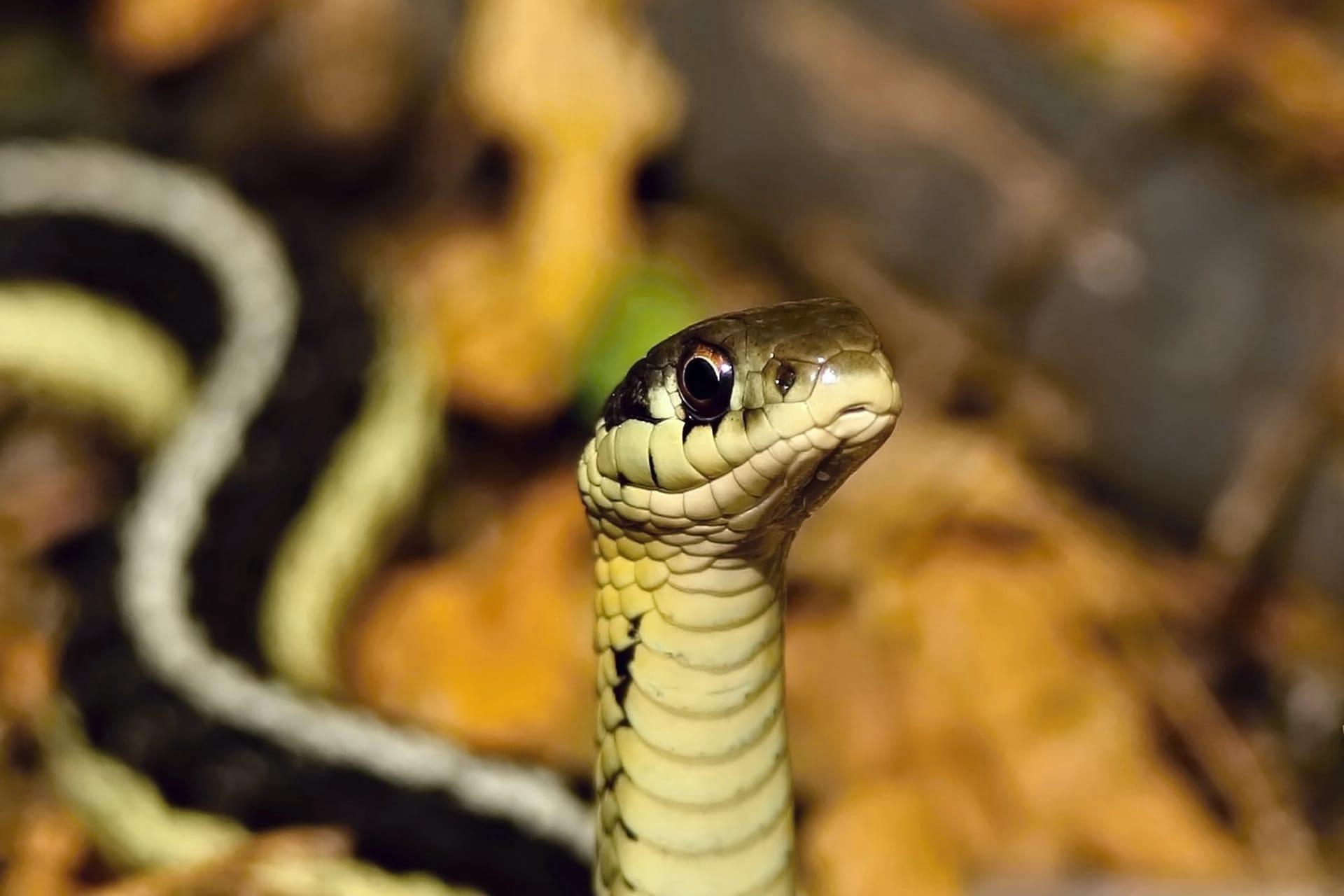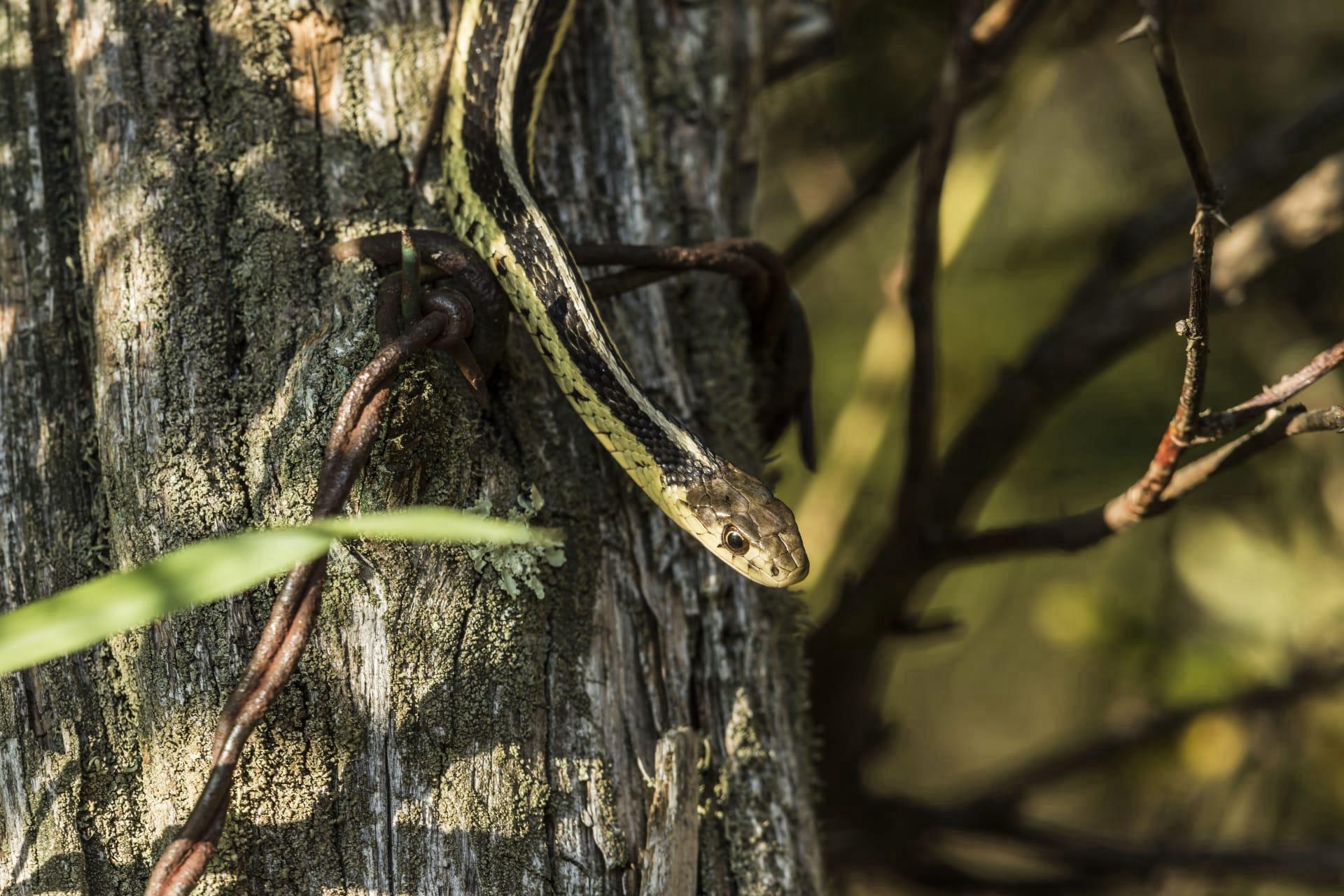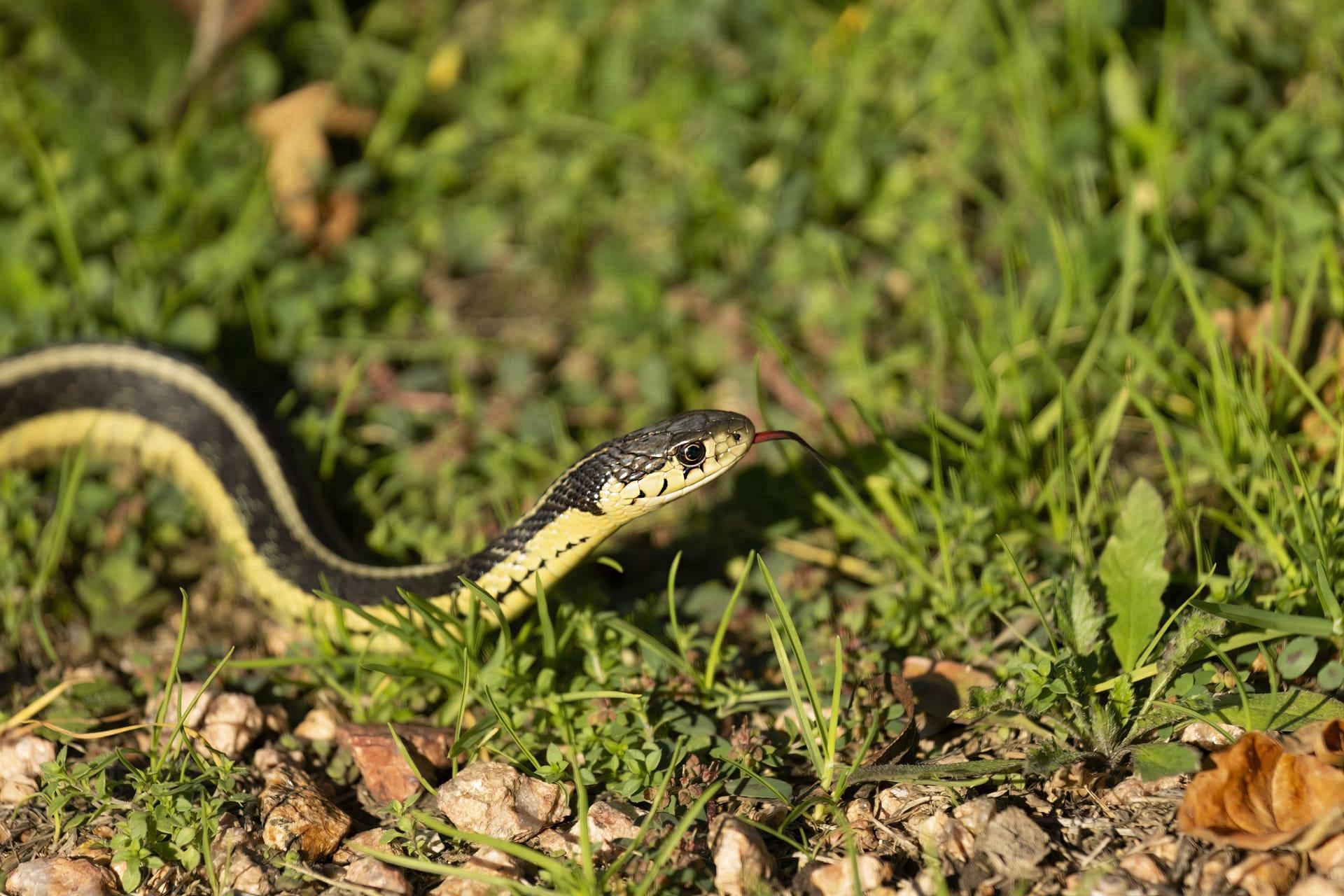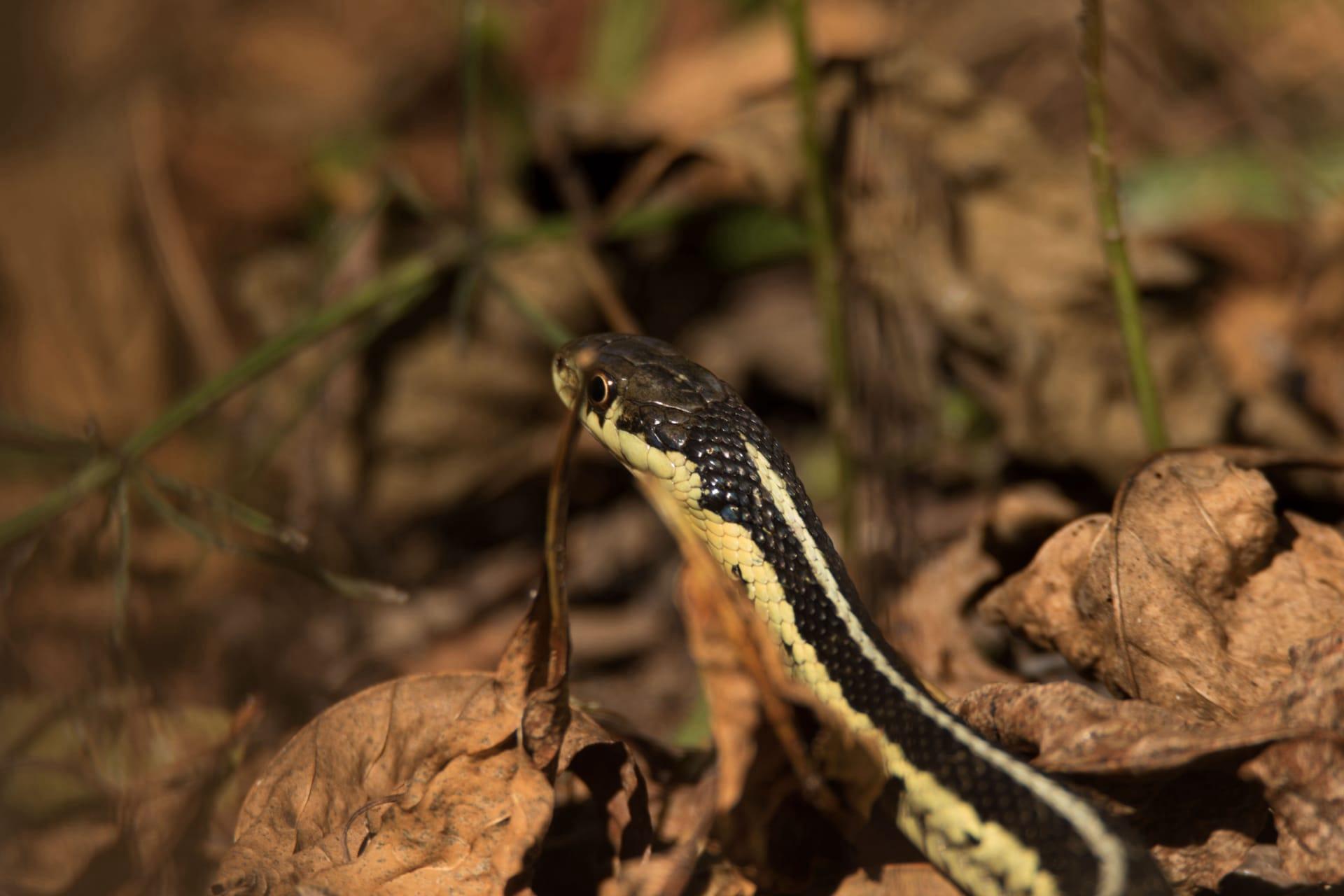1
Did you know that garter snakes, often spotted in backyards across North America, are real escape artists? These slender reptiles, usually measuring around 23 to 30 inches in length, have a unique talent for evading predators. When threatened, they release a foul-smelling musk from their cloacal glands. This musk not only smells bad but also contains pheromones that can confuse or deter would-be attackers. It's a clever trick for a snake that's often on the menu for birds, mammals, and even other snakes!
Another fascinating aspect of garter snakes is their 'thermal regulation' strategy. Unlike us, they can't regulate their body temperature internally. So, they bask in the sun to warm up and seek shade or burrow into the ground to cool down. This behavior is crucial for their survival, affecting their hunting efficiency, speed, and even reproductive capabilities. On a sunny day, a garter snake's body temperature can range from 28 to 32 degrees Celsius (82 to 90 degrees Fahrenheit), ideal for peak activity.

2
Garter snakes have a diverse diet, but one of their favorite meals is the amphibian delight, especially frogs and toads. Their hunting technique is fascinating – they have a highly developed sense of smell and can detect prey in water or on land. Using their tongue to 'taste' the air, they can track down a frog with surprising accuracy. Once they locate their prey, they use rapid strikes to capture it, consuming it whole.
These snakes also have a remarkable adaptation to the toxins released by toads. While most predators would be deterred or harmed by these toxins, garter snakes have evolved a resistance, allowing them to feast on toads without ill effects. This adaptation is a prime example of evolutionary specialization, as it's not common in all snake species. The garter snake's ability to eat toads gives it a significant advantage in areas where these amphibians are abundant.

3
Did you know garter snakes are social creatures, especially during hibernation? In colder regions, they gather in large numbers, sometimes hundreds or even thousands, in dens to hibernate through the winter. This communal hibernation helps them conserve heat and increases their chances of surviving the cold months. The largest known gathering of garter snakes is in the Narcisse Snake Dens in Manitoba, Canada, where tens of thousands of snakes congregate each year, creating a spectacular natural phenomenon.
Garter snakes also exhibit a unique mating behavior known as a 'mating ball.' This occurs when a single female releases a pheromone attracting numerous males. The males swarm around the female, creating a writhing ball of snakes, each trying to mate with her. This frenzied competition can involve up to twenty-five males per female and can last for hours. The female eventually selects a mate from the throng, ensuring the strongest genetics for her offspring.

4
Contrary to popular belief, garter snakes aren't completely non-venomous. They do produce a mild venom, but it's not harmful to humans. This venom is effective on their prey, such as amphibians and small rodents. The garter snake's bite delivers this venom through their rear fangs. However, their fangs are positioned towards the back of their mouth, making it difficult to inject venom into larger predators or humans. This adaptation is primarily for subduing small, fast-moving prey.
Another interesting fact about garter snakes is their remarkable swimming ability. These snakes are not only comfortable on land but also adept swimmers. They can be found gliding through ponds, streams, and lakes, hunting for aquatic prey or escaping predators. Their slender, flexible bodies allow them to move with ease in water, making them as much at home in a pond as they are in a grassy field.

5
Garter snakes are known for their adaptability to different environments. They are one of the most widespread snake species in North America, found from the humid environments of Florida to the dry grasslands of the western United States and even into parts of Canada. This wide range in habitat is due to their ability to thrive in various environments, from woodlands to meadows and wetlands. Their diet flexibility also plays a role, as they can eat a variety of prey, adapting their diet to what's available in their environment.
Lastly, garter snakes play a crucial role in their ecosystems. As both predator and prey, they help control the populations of small animals and insects, which in turn impacts plant pollination and the spread of seeds. Their presence also indicates a healthy ecosystem. Due to their sensitivity to environmental changes and pollutants, a healthy population of garter snakes often reflects a healthy, balanced ecosystem. This makes them important indicators for environmental scientists studying habitat health.